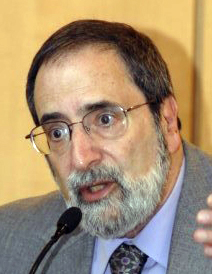By Laurie Baron

SAN DIEGO — The Z in the latest summer blockbuster World War Z stands for zombies, but bloggers on the Aljazeera English website claim the Z stands for Zionist propaganda. On the other hand, Jeffrey Goldberg of The Bloomberg View calls the movie “’the most pro-Israel movie ever made. Or at the very least the most pro-Israel zombie movie ever made.”
By now you should be asking, “How do zombies and Israel intersect with each other? Did some pious zombies crave kosher meat? Had they been swimming in the Dead Sea? Did Hamas or Iran weaponize the virus and launch it into Gaza on the warheads of missiles? Did an ultra-orthodox congregation recruit a minyan of zombies to daven at the shul confusing their jerky back and forth motions with shuckling?
None of the above! It turns out the viral infection that causes human beings bitten by infested animals and people to become twitchy bloodthirsty Zombies is a pandemic. Though the movie begins in Philadelphia with Gerry Lane (Brad Pitt) and his family narrowly escaping swarms of rampaging Zombies, it shifts to various sites around the world as former UN hotspot investigator Lane gets dispatched to identify the cause of the outbreak.
While in South Korea, Lane interviews an ex-CIA operative who is in prison for selling arms to North Korea. He informs him there are two countries which haven’t been overrun by the undead: North Korea and Israel. The North Korean government ordered the extraction of the teeth of all its citizens to prevent them from biting each other and spreading the disease. Israel built a high wall around Jerusalem to keep the zombies out. The agent’s story echoes conspiracy theories about Israel having advance warning about the attack on the World Trade Center.
Lane heads off to Jerusalem and meets with the head of the Mossad Jurgen Warmbrun played by the Israeli actor Ludi Boeken. Warmbrun explains to him that Israeli security operates under the tenth man rule. When it receives a tip that nine of the leading officers dismiss, the tenth argues why the improbable might be credible.
After all, Jews initially could not believe that Hitler would act on his threats to exterminate them, and, Israel failed to heed signs of Egyptian troop movements before the Yom Kippur War. Thus, when the Mossad intercepted a message that a remote province in India was battling zombies, it checked into the story and confirmed it. This prompted the construction of the towering wall and a maze of checkpoints to admit the non-infected but bar the zombies.
The image of the wall and the the lines of people waiting to pass approval for their entry conjures up negative and positive aspects of contemporary Israeli policies. Walls inevitably have two sides. Warmbrunn rationalizes his decision to grant equal access to Arabs and Jews by commenting, “Every human being we save is one less we have to fight.” This sounds like a pragmatic version of the Talmudic dictum that “he who saves one life saves the entire world.” If, however, Palestinians seeking their own state are equated with zombies, then Warmbrunn’s could be exclusionary. Does the film rationalize the separation barrier/wall as a necessary security measure or discredit it since the zombies ultimately breech it by clambering up each other like ants?
While World War Z provides no clear interpretation of the wall, it does feature one of the most admirable Israeli characters to be seen in a long time. As the fearless and tough IDF female soldier Segen, Israeli actress Gabriella Kertesz exhibits bravery, fearlessness, and resilience that equals that of Lane. In German Segen means “blessing” and in Hebrew “lieutenant, and she serves valiantly in both capacities. Segen’s abilities to fend off zombies and endure excruciating pain are cinematic proof that women merit combat roles.
Filmmaker Marc Foster pays visual homage to George Romero’s zombie flicks and emulates some special effects from more recent productions like 28 Days and I Am Legend. His zombies run faster and convulse their bodies more violently than their predecessors. By usually photographing them as a surging horde from above or in their midst with a handheld camera, Foster spares the audience much of the bloody gore that zombie feeding frenzies entail. Lane’s survival and solution to the zombie problem strain credulity and derive as much from the Andromeda Strain as from other zombie movies. All in all, it’s a riveting film with solid performances that make it a good excuse for getting out of the heat and into a cool theatre.
*
Lawrence Baron recently retired from being the Nasatir Professor of Modern Jewish History at San Diego State University. He is the author of Projecting the Holocaust into the Present: The Changing Focus of Contemporary Holocaust Cinema (Rowman and Littlefield: 2005) and editor of The Modern Jewish Experience in World Cinema (Brandeis University Press: 2011). He may be contacted at lawrence.baron@sdjewishworld.com